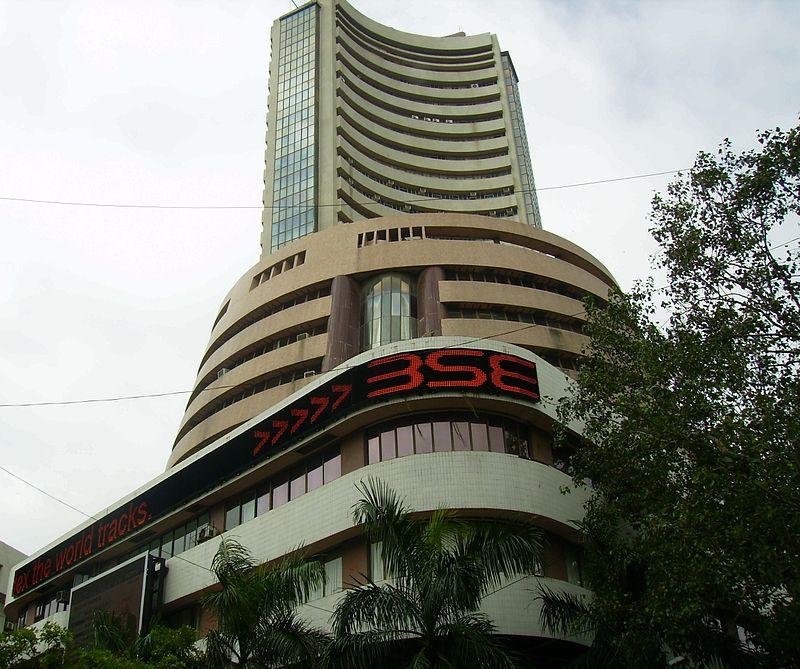New Delhi– Continuing rise in food and fuel prices pushed India’s annual retail inflation rate over the five per cent mark in December, and factory output jumped in November to grow by over 8 per cent, official data showed on Friday, putting paid to hopes of an RBI rate cut, even as industry observers attributed the high inflation numbers to the “base effect” of the demonetisation of November 2016.
Data from the Central Statistics Office (CSO) showed December’s consumer price index (CPI) inflation rose to 5.21 per cent, from 4.88 per cent in November. On a year-on-year (YoY) basis, the CPI inflation last month was higher than the 3.41 per cent recorded in December 2016.
The Consumer food price index (CFPI) in December stood at 4.96 per cent compared to 4.42 per cent in November 2017.
The annual CPI in rural areas in December ruled higher at 5.27 per cent, while in urban India it rose by 5.09 per cent.
Retail inflation on a YoY basis edged higher due to a rise in the prices of food items like vegetables, milk-based products, eggs, meat and fish. Vegetables in December became costlier by a whopping 29.13 per cent, while prices of milk-based products rose by 4.37 per cent.
Among non-food categories, the “fuel and light” segment’s inflation rate accelerated to 7.9 per cent in October.
Meanwhile, an exponential rise in the manufacturing output lifted India’s factory production by over 8 per cent in November, from a rise of 1.99 per cent in October, and 5.1 per cent growth during the corresponding period of 2016-17.
The acceleration in factory output was mainly on account of a robust performance by the manufacturing sector. It expanded by 10.2 per cent on a year-on-year basis, while the mining sector’s output inched up by 1.1 per cent and the sub-index of electricity generation increased by 3.9 per cent.
“The cumulative growth for the period April-November 2017 over the corresponding period of the previous year stands at 3.2 per cent,” the CSO report on the “Quick Estimates” of Index of Industrial Production (IIP) for November said.
The output of primary goods grew by 3.2 per cent, while that of intermediate goods rose by 5.5 per cent. Output of “infrastructure or construction goods” increased by 13.5 per cent and that of capital goods by 9.4 per cent.
Similarly, consumer non-durables’ output rose by 23.1 per cent, and that of consumer durables by 2.5 per cent.
“In terms of industries, 15 out of the 23 industry groups in the manufacturing sector have shown positive growth during the month of November 2017 as compared to the corresponding month of the previous year,” the CSO said.
Reacting to the data, industry body CII said that November IIP numbers reflected “the economic revival taking place across sectors”.
“This recovery is especially heartening since it reflects higher growth rates in investment related categories such as capital goods and infrastructure or construction goods,” its Director General Chandrajit Banerjee said in a statement.
“These are also corroborated by other indicators such as the strong performance of the commercial vehicles sector and the pick in the growth rate of bank credit.”
PHD Chamber’s President Anil Khaitan said that as the “teething problem of GST” have been almost over, the growth in industry has come with a strong rebound and “we look forward the growth to become more strong in the coming quarters”.
However, other industry observers pointed out that low base effect of the November 2016 due to demonetisation measure also had a role to play in the upward trajectory of industrial production and retail inflation.
“In line with our expectations, CPI inflation in Dec ’17 has increased to a 17-month high of 5.21 per ce’t, compared to 4.88 per cent in Nov ’17. However, there is nothing to worry about this higher number as this is primarily due to base effect,” state-run State Bank of India Chief Economic Adviser Soumya Kanti Ghosh said in a report.
“Consumer price inflation has moved up on expected lines and is likely to inch up in the coming months,” consulting multinational Deloitte’s Senior Economist Richa Gupta said in a statement.
Angel Broking Research Analyst Jaikishan Parmar said: “For November 2017, the index of industrial production was sharply higher at 8.4 per cent. However, it needs to be noted that it could be partially attributed to the base effect as November 2016 was the month when IIP had taken a hit due to demonetisation.”
Earlier this month, Finance Minister Arun Jaitley had told Parliament that inflation had increased owing to a seasonal rise in vegetable prices and the higher house rent allowances disbursed to government employees under the 7th Pay Commission recommendations.
Inflationary risks forced the Reserve Bank of India (RBI) to hold its key lending rate unchanged for the third time in a succession at 6 per cent in its penultimate bi-monthly monetary policy review of the fiscal last month. (IANS)






